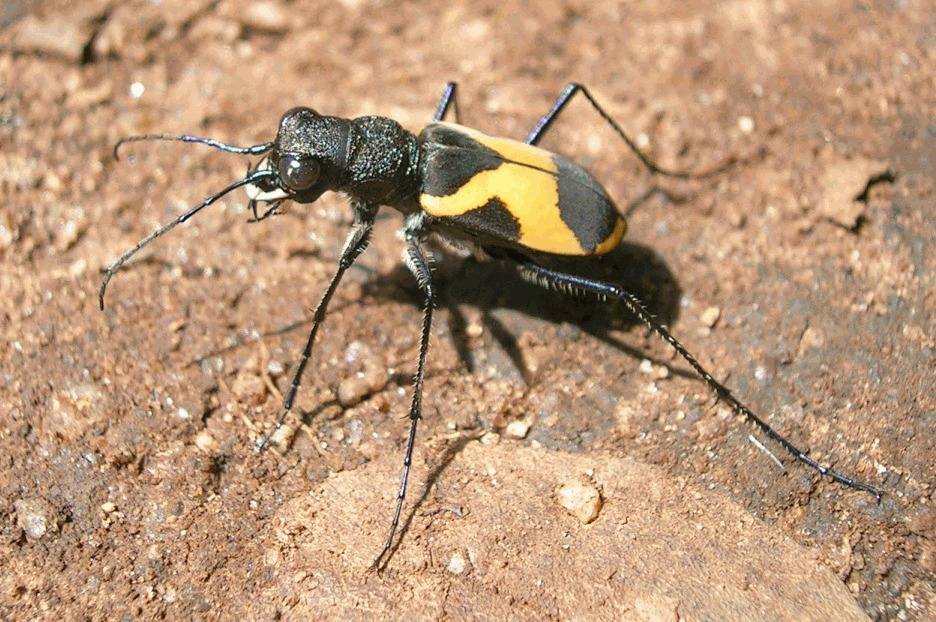
There are over two thousand species of tiger beetle worldwide and over one hundred in North American where they can be found in sandy areas such as beaches and sand dunes, stream edges, saline flats, clay banks, rocky outcrops, mudflats and wooded paths. Most are active in daytime but some are nocturnal or prefer dusk. Adult tiger beetles are usually between .5-1 inch long and have large bulging eyes, large curved mandible, narrow elongated body, and long spindly legs. Their coloration and markings vary greatly from grayish brown , to bright purple, orange and black, or iridescent green. Some are spotted while others are a solid color.
Both adults and larvae are predators and feed on a wide range of fauna including ants, beetles, caterpillars, flies, grasshopper nymphs, insects, and spiders. The adults are known for their very rapid running speed that helps them capture their prey with their long, curved mandibles. They exude digestive enzymes on the prey and then consume them. The larvae, on the other hand, live in their whole life in a burrow with their head blocking the opening. When a prey comes along the larva reaches out in a back flip to grab the prey and eats it after dragging it into the burrow.
Tiger Beetles undergo complete metamorphosis. Adults emerge in the summer and mate with one or more males during their six week life span. Males try to guard their females from other suitors by grabbing the female’s thorax with his large jaws and then riding on top of her. The female looks for damp sand or soil to lay her eggs and lays three to four eggs per day, each in a small hole that she digs and then covers the to protect the egg from predators. After the larvae hatch from the eggs they dig vertical burrows up to eighteen inches deep where they live for three to four years depending on climate and food availability. The larvae are large grubs with a humped back, flattened head, and sickle-shaped jaw that flips backward to capture the prey. The larvae go through three stages before pupating which they begin by plugging the entrance to the burrow. They emerge from the pupa three or more weeks later but remain in their borrow for three days so as to let their exoskeletons harden.
Tiger beetles do not need plant material to carry out their life cycle so methods for encouraging population are aimed at providing a suitable habitat for reproduction. Females prefer moist sand or soil for egg laying and larvae do best in loose moist soil with plenty of fauna so efforts at meeting these needs would be fruitful. Avoidance of broad spectrum insecticides is also necessary.